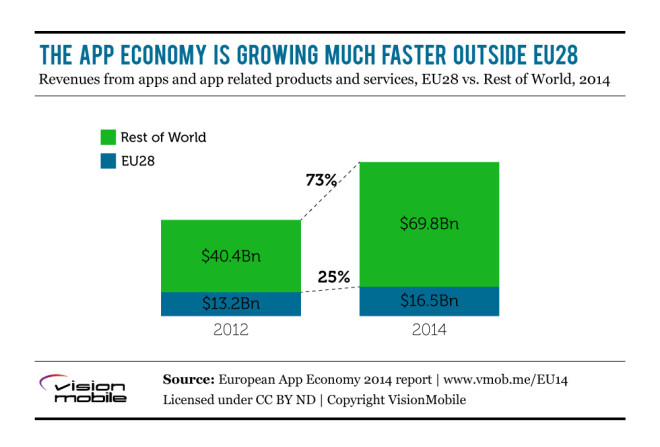What are some of the key differences between developers in East Asia, including the Greater China region, and the rest of the world? In the 22nd edition of our Developer Nation Survey we collected insights from developers and software engineers in East Asia to try to answer this exact question. Here is what we found!
“A fifth of the global developer population is located in either the Greater China region or the rest of East Asia”
We split the Greater China area from the rest of East Asia to provide more regional granularity. In terms of relative size, we find that almost a fifth (18%) of the global developer population is located in either the Greater China region (9%) or the rest of East Asia (9%). Breaking down East Asia into countries, we see that more than half of the developers here are spread across two countries: Indonesia (32%) and Japan (21%). When comparing developers across regions, we can see that just over a third (34%) of developers in the Greater China region have six or more years of experience, which is notably less than developers globally (43%). Furthermore, the Greater China region has a much smaller concentration (4% vs 22% globally) of highly-experienced developers (16+ years). With generally lower levels of experience in the Greater China area, aspiring developers may find starting a career here less competitive than developers in regions with higher levels of experience.
“East Asian developers outside China have similar levels of experience to the rest of the global developer population”
Both groups have a little more than a third (34%) of their developers with 11+ years of software development experience. However, East Asia’s data are largely propped up by Japan. The developer community in Japan tends to be highly experienced, with almost six in ten developers (59%) having 16+ years of experience. No other country has a higher concentration of developers with this level of experience.
“Developers in the region are mostly either self-taught or have an undergraduate degree in computing”
The journey to coding mastery lacks a clearly defined path. Developers typically state they’ve used more than two learning methods on average to learn how to code. In general, the self-taught method is the most popular among developers globally, with more than 60% using this method. However, our data shows that the proportion of self-taught developers fluctuates significantly across regions.
In the Greater China area, the most popular method for developers to learn how to code is via an undergraduate degree in computing, with 50% having used this method. This is significantly higher than developers in other regions (41% -42%). We generally see a higher concentration of professional developers in Greater China (83%) than we do in the rest of the world (70%). It could be that the job market in Greater China more often requires a degree in computing or engineering, which would also explain why self-teaching is used less often in this region.
Developers in the rest of East Asia, however, tend to follow the learning trends of developers in other regions. Here, we see the self-taught method is the most popular method (61%), followed by an undergraduate degree in software engineering (41%). Analysing the data at a country level, we see developers in Indonesia are more diverse learners. Developers in this country stated that they used three methods on average when learning to code. Indonesian developers are more likely to learn via self-teaching, online courses, and developer boot camps than any other developers in East Asia. This is quite different from their peers in Japan who are the least likely to use online courses and bootcamps to learn how to code. Instead, developers in Japan are most likely to use the self-taught (63%) and on-the-job training (45%) methods when learning to code.
“Less Stack Overflow, more Segmentfault.com and Teratail.com
Next, we explore how developers interact with the popular online community, Stack Overflow, to understand their engagement levels with programming support. Stack Overflow has become a standard support community for many developers, with more than eight in ten (85%) of the general developer population reporting they’ve used or visited this popular question and answer site.
Our focus on developers in East Asia and the Greater China area shows Stack Overflow’s popularity falls below the global average. Developers in these regions are around three times less likely to visit Stack Overflow than developers in other regions. Developers in the Greater China area are the least engaged, with only 19% having an account, and only 11% having earned at least one badge. Developers in this region have other home-grown Q&A site alternatives, such as segmentfault.com, which could be contributing to the lower adoption of Stack Overflow.
Developers in Japan are skewing the perception of this region. Developers in Japan have even less activity on Stack Overflow than developers in the Greater China area. Here, only a little more than a third (36%) stated they use Stack Overflow. Furthermore, only about 5% have an account. Like developers in the Greater China area, our data does show usage of Stack Overflow increases among Japanese developers who have gained experience in software development, indicating that less experienced developers are using other platforms for support. Like China, Japan has other home-grown options like teratail.com where developers can field programming support from their peers, which may be the place new Japanese programmers visit more often to get answers to their questions.






